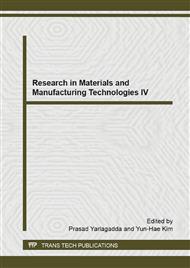p.109
p.112
p.120
p.125
p.129
p.133
p.137
p.141
p.145
Syntactic Foam Prepared with Glass Hollow Spheres of Designed Size and Wall Thickness Ratio
Abstract:
A new type of syntactic foam fabricated with four types of hollow microspheres (HGMs) were prepared and its compressive properties were tested following ASTM D 695-96 standard. The HGMs were designed to have specific size distribution and wall thickness. The compressive strength and modulus of the new syntactic foam were compared with those prepared with single type of HGMs. With same density, the new syntactic foam have better compressive properties.
Info:
Periodical:
Pages:
129-132
Citation:
Online since:
December 2014
Authors:
Keywords:
Price:
Сopyright:
© 2015 Trans Tech Publications Ltd. All Rights Reserved
Share:
Citation:


